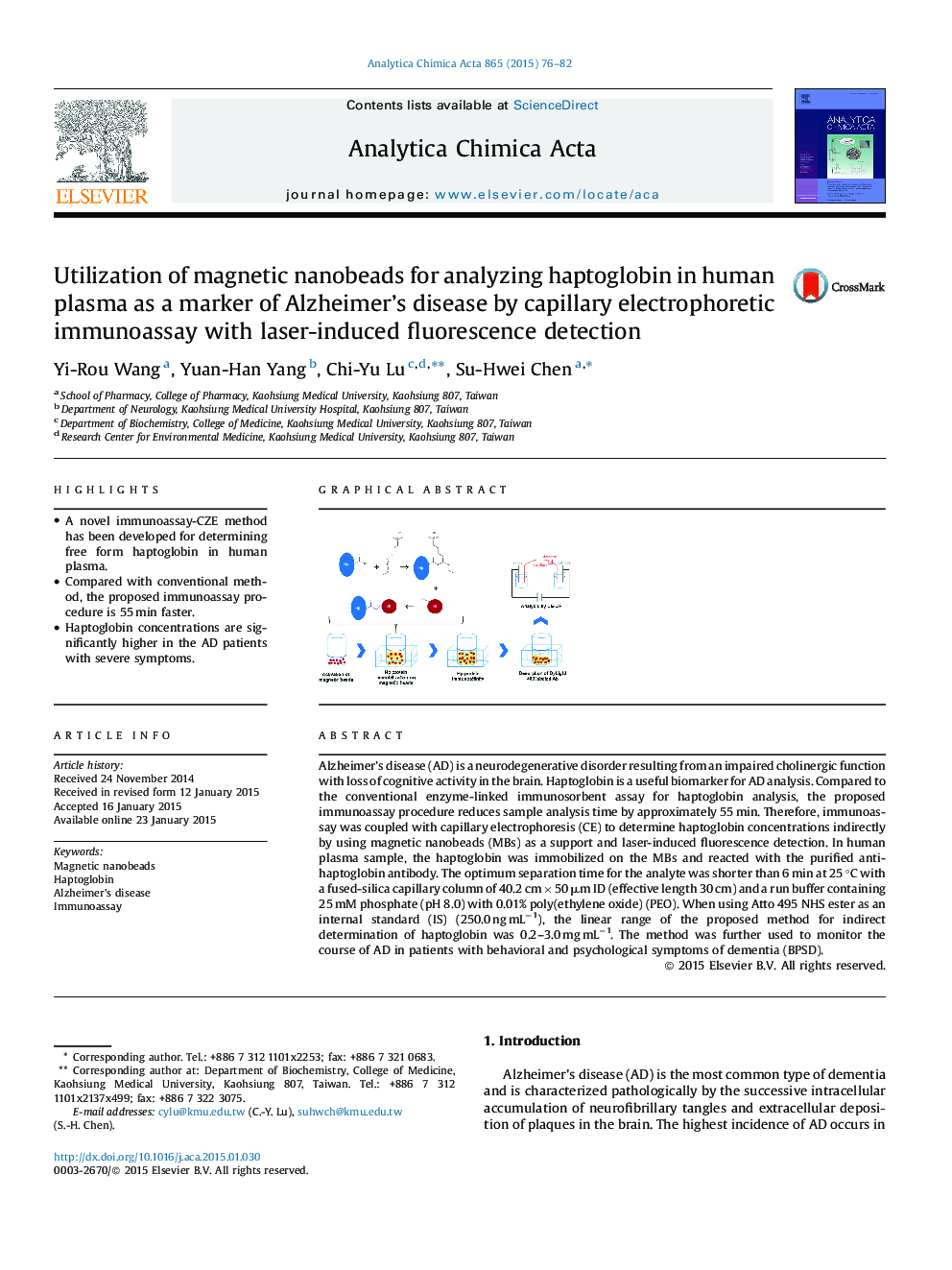| Article ID | Journal | Published Year | Pages | File Type |
|---|---|---|---|---|
| 1164028 | Analytica Chimica Acta | 2015 | 7 Pages |
•A novel immunoassay-CZE method has been developed for determining free form haptoglobin in human plasma.•Compared with conventional method, the proposed immunoassay procedure is 55 min faster.•Haptoglobin concentrations are significantly higher in the AD patients with severe symptoms.
Alzheimer’s disease (AD) is a neurodegenerative disorder resulting from an impaired cholinergic function with loss of cognitive activity in the brain. Haptoglobin is a useful biomarker for AD analysis. Compared to the conventional enzyme-linked immunosorbent assay for haptoglobin analysis, the proposed immunoassay procedure reduces sample analysis time by approximately 55 min. Therefore, immunoassay was coupled with capillary electrophoresis (CE) to determine haptoglobin concentrations indirectly by using magnetic nanobeads (MBs) as a support and laser-induced fluorescence detection. In human plasma sample, the haptoglobin was immobilized on the MBs and reacted with the purified anti-haptoglobin antibody. The optimum separation time for the analyte was shorter than 6 min at 25 °C with a fused-silica capillary column of 40.2 cm × 50 μm ID (effective length 30 cm) and a run buffer containing 25 mM phosphate (pH 8.0) with 0.01% poly(ethylene oxide) (PEO). When using Atto 495 NHS ester as an internal standard (IS) (250.0 ng mL−1), the linear range of the proposed method for indirect determination of haptoglobin was 0.2–3.0 mg mL−1. The method was further used to monitor the course of AD in patients with behavioral and psychological symptoms of dementia (BPSD).
Graphical abstractFigure optionsDownload full-size imageDownload as PowerPoint slide
